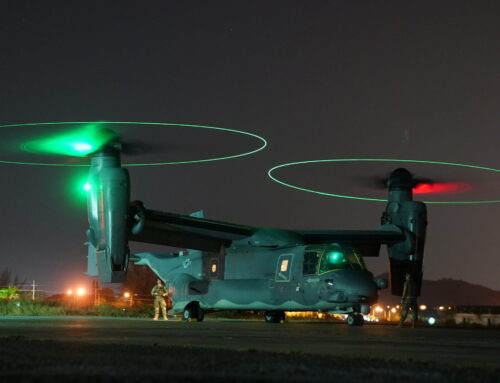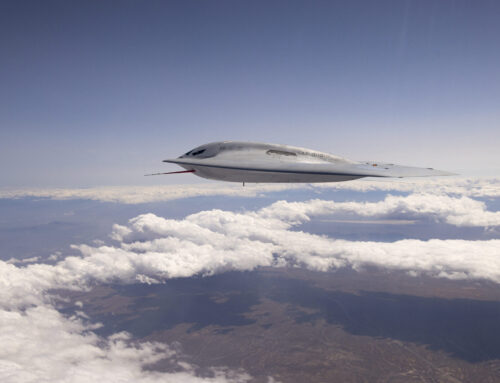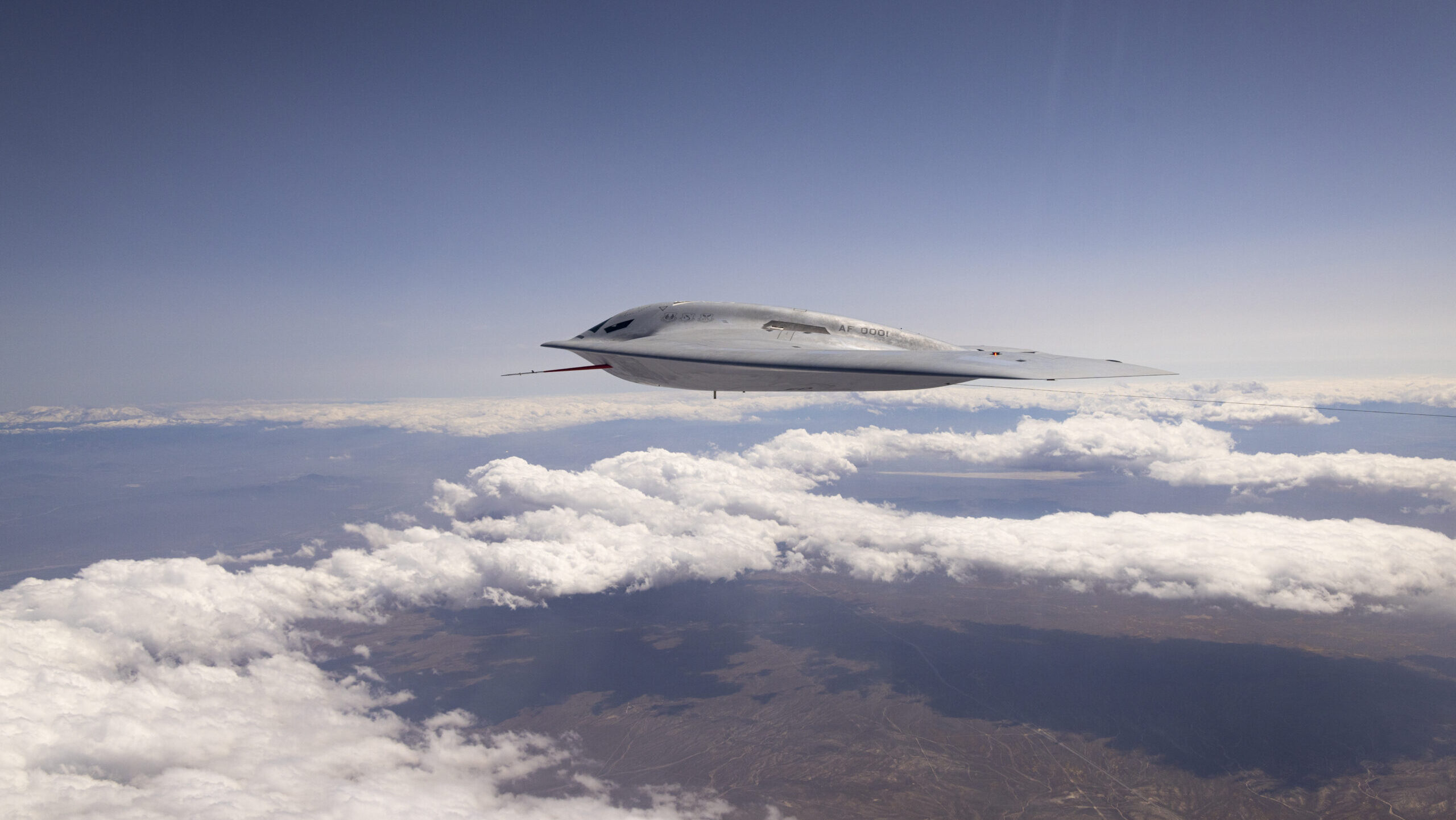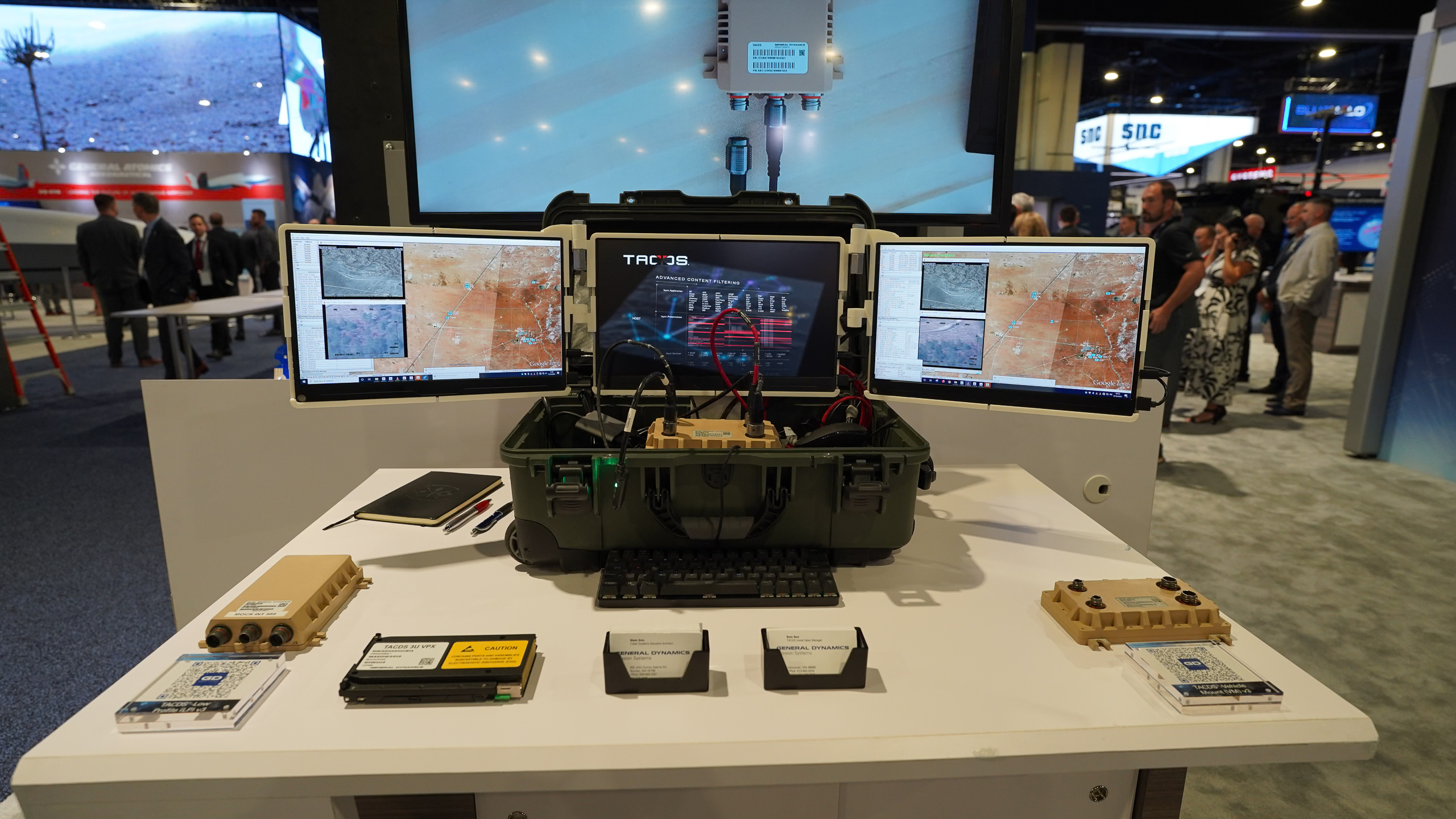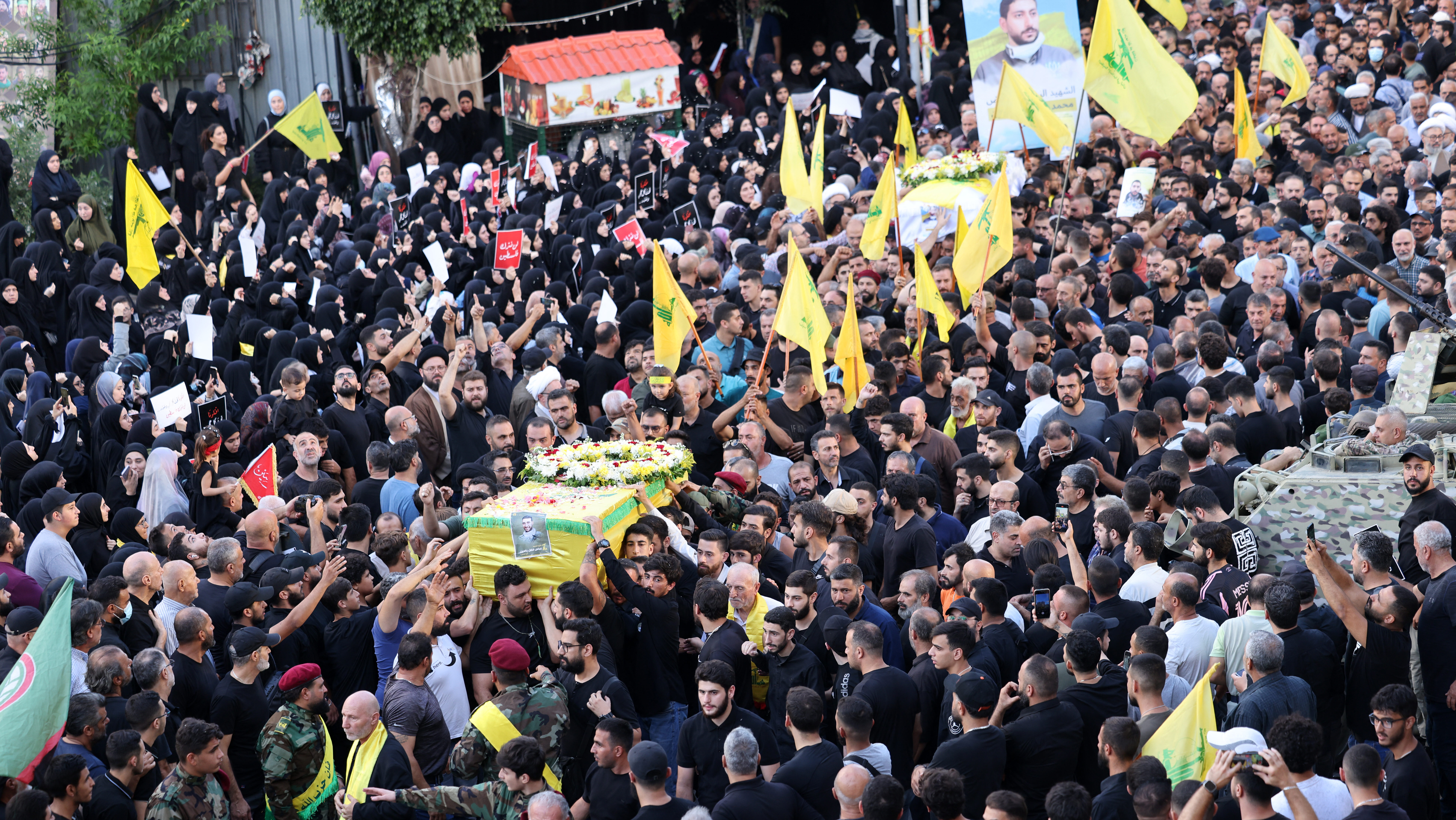Col. Mark Cobos, commander, 1st Space Brigade, US Army Space and Missile Defense Command, thanks Chief of Space Operations US Space Force Gen. Chance Saltzman and Chief Master Sgt. of the Space Force John F. Bentivegna for visiting the brigade headquarters at Fort Carson, Colo., April 10. (US Army photo by Dottie White)
Our Aug. 13 op-ed on the Army’s overreach to create a new space career field and expand its space control capabilities struck a surprising chord, and generated a robust and frankly overdue debate about the Army’s role in space. After reading the Army’s formal rebuttal, visiting soldiers doing space missions, and having many conversations with members of the US Space Command, our takeaway is clear:
The need to clearly understand the distinctions in roles and functions of the various services and combatant commands is foundational to the success of joint operations, and the conversation around the Space Force and its relationships needs to continue for all stakeholders to really understand each other’s stances.
In our discussions since our first op-ed, we have concluded that there are three broad reasons behind the Army’s desire to increase its organic space expertise and capabilities. While these may make sense from a pure Army perspective, it does not they fit into the integrated warfighting construct now being pushed by top Pentagon leaders, who understand that joint collaboration is the best way to maximize effectiveness and efficiencies to win.
First, the space missions are just the latest in a pattern of Army actions stemming from what appears to be deep-seated mistrust of other services providing tactically relevant cross-domain support. This sentiment goes back decades and spans multiple military functions. This is why the Army maintains its own uninhabited aerial vehicles for its own “organic” use, of the same class that the Air Force operates for joint force application. This is also why the Army is now spending over $990 million on long-range fixed-wing intelligence, surveillance, and reconnaissance aircraft.
At the heart of these efforts is the desire to maintain control. The underlying mindset seems to be that if the Army doesn’t directly control it, they can’t trust it to deliver their desired effects. While it is understandable that an Army commander would feel this way, this is the antithesis of joint integration at a time when no one service will ever fight by itself.
The second major factor is money, and maintaining funding priority in a new warfighting environment. This is clearly the case with the Army’s pursuit of very long-range, theater-capable hypersonic missiles (at over $50 million a shot) in response to China becoming the Department of Defense’s “pacing” threat. Over two decades following 9/11, the Army received $1.3 trillion more than the Air Force, largely thanks to the focus on counter-insurgency operations. Given the nature of the threat and the priority to our nation, this was a justified expenditure. As the preponderance of forces in Afghanistan and Iraq, the Army used these funds for missions critical to our defense strategy at the time. They also used this money to modernize their equipment across the entire Army.
But this was not without negative impacts to the other services. A 2022 Mitchell Institute paper describes how other services that were the source of the funding for the Army severely atrophied. As our nation and its military’s attention now shift to China, the relative priority and corresponding funding should likewise shift from the Army back to the Air Force, Space Force, and Navy, to reflect the preponderance of forces that will be involved in a China fight.
Third, there is a breakdown in the joint lexicon for space missions and functions. For example, the Army states its systems are for space control, to “interdict” adversary use of space against their soldiers in combat, as a service-unique requirement. But all service components that comprise a joint task force require protection from adversary space-enabled attacks. This is, in fact, a key element of space superiority and the central role of the Space Force, along with the continued delivery of capabilities and effects such as missile warning, satellite communication, space-based environmental monitoring, and position, navigation, and timing. The Space Force must secure our nation’s ability to deliver space capabilities and effects while denying the same to adversaries.
The Army component of a joint task force—just like every other service component—may have requirements to interdict adversary use of space, but national leaders must clearly understand that space interdiction is simply a facet of space superiority. Trying to achieve it piecemeal would be like trying to achieve localized air superiority with fighters assigned to Army units—it doesn’t work. The current Army rationale is anachronistic when today, the Space Force and US Space Command are now assigned and responsible for performing this mission.
Modern War Requires A Modern Joint Construct
A long-standing mistrust of joint operations, improper budget prioritization, and terminology that is confusing and outdated is a recipe for failure against a peer adversary like China. The Department of Defense must take steps to better align and synchronize joint efforts if initiatives like Combined Joint All Domain Command and Control (CJADC2) and the delivery of overwhelming cross-domain effects are to be realized.
The following suggestions are aimed at increasing collaboration and ensuring future joint and coalition operations have the tools and skills to win against any adversary.
1) Most simply, all services should develop new space capabilities consistent with existing joint processes. Right now, that means the Joint Requirements Oversight Committee must validate an existing requirement. Then an analysis of potential non-materiel solutions must conclude that a materiel solution will be necessary to adequately address the requirement. Finally, the Space Acquisition Council must then determine which material solution(s) are necessary and which service will lead the efforts.
As the DoD lead for space integration, the Space Force, through the Space Acquisition Council, must have a leading role in defining the integrated space architecture. Once fielded, regardless of the service operating the system, US Space Command must centrally coordinate space superiority effects. This approach ensures the appropriate allocation of taxpayer dollars, synchronizes operations, and avoids unintentional redundancy.
2) Additionally, all services must prioritize the execution of their existing assigned responsibilities that are critical for joint force operations over those that are parochial. For example, the Army is responsible for base defense and must deliver an effective suite of air and missile defense capabilities essential for all the service component requirements for future conflict. This is an Army mission, and they should fund it. Failing that, the other services should be funded to field active defense systems for their forward operating bases, and the Army budget reduced accordingly.
3) The Department of Defense should conduct a review of existing service and joint publications to ensure doctrine, policy, and organizational roles and responsibilities are consistent with service core missions and appropriate joint agreements. Previous updates conducted immediately after the stand-up of the Space Force had accelerated timelines and happened during a period when the Space Force’s presence in the Pentagon was woefully understaffed. Now five years later, it is time to reassess these documents to ensure they accurately reflect the relationships and responsibilities of all services as they relate to space missions. Guardians assigned to the Pentagon, on the Space Force Staff, Joint Staff, or Office of the Secretary of Defense Staff, should scrutinize the language in policy and ensure service equities are properly addressed.
4) To improve cohesion and trust, the DoD should ramp up joint and coalition exercises and training events that specifically address the role of space operations. It takes practice and repetition to develop trust and refine the operational and tactical effectiveness of joint and coalition operations. When possible, these exercises should employ live jamming and coordination of joint fires to increase realism and refine employment tactics, techniques, and procedures.
5) Congress must ensure the resources and organizations within the Department of Defense are consistent with the spirit and intent of the guidance that created the Space Force and US Space Command. Congress should review joint space programs to verify the DoD is developing them with joint operations in mind and that they have followed the appropriate processes to ensure the most effective and efficient use of taxpayer dollars.
6) The current overlap in perceived service roles in space operations with the Space Force is reason enough for Congress to direct the establishment of a commission, independent from the Department of Defense, to conduct a review of service roles and missions. The last such commission conducted this kind of review in 1994/95, well before the standup of the Space Force. While longstanding agreements should remain in place, new functions and authorities related to space and cyber would benefit from an updated evaluation and agreement.
These are dangerous times. Organizing the DoD to ensure the United States is prepared for future challenges is vital. The discussion on Army overreach highlights the need to properly steward our nation’s resources to maximize effectiveness and lethality in a fiscally responsible and coordinated manner.
There is undoubtedly a role for the Army and all services when it comes to space security. However, the DoD must identify and develop these approaches in a deliberate and coordinated manner, not passively allowing the services to independently and parochially pursue what only they determine is necessary for their own service component purposes.
Charles Galbreath is a retired United States Space Force Colonel, a Command Space Operator with expertise in Missile Warning, Space Control, Space Launch, and ICBM operations, and a Senior Materiel Leader with experience developing advanced technology demonstration and prototype systems.
Jennifer Reeves is a retired United States Air Force Colonel with almost 29 years of active duty, finishing her career as the Chief of the Air Force’s Engine Room, leading the service’s Program Objective Memorandum (POM) build. Immediately prior to joining the Mitchell Institute, Reeves worked for a non-traditional government contractor focusing on creating purpose-built software applications to assist in decision-making in the POM build process.
Both are Senior Resident Fellows for Space Studies at the Mitchell Institute.



